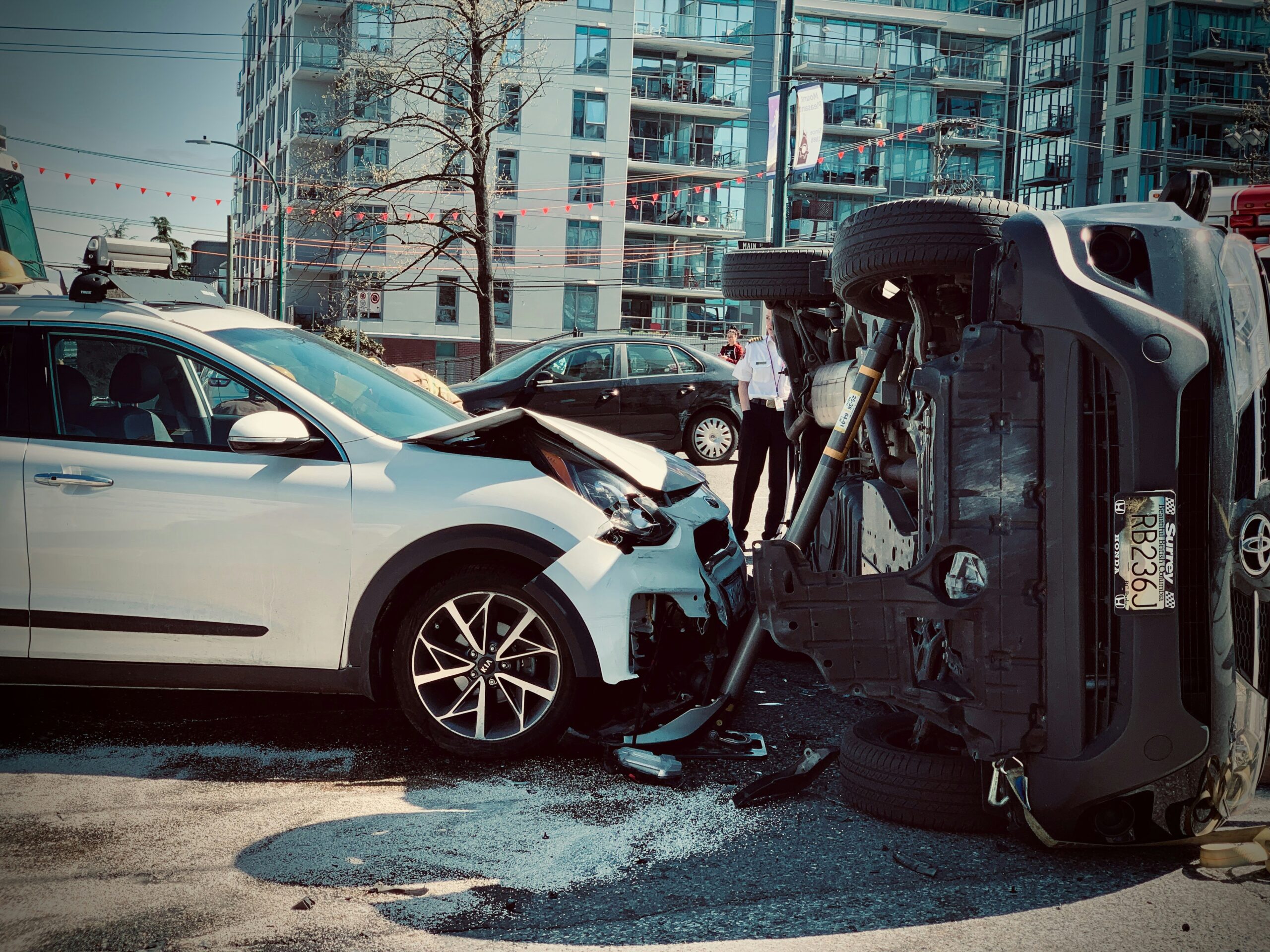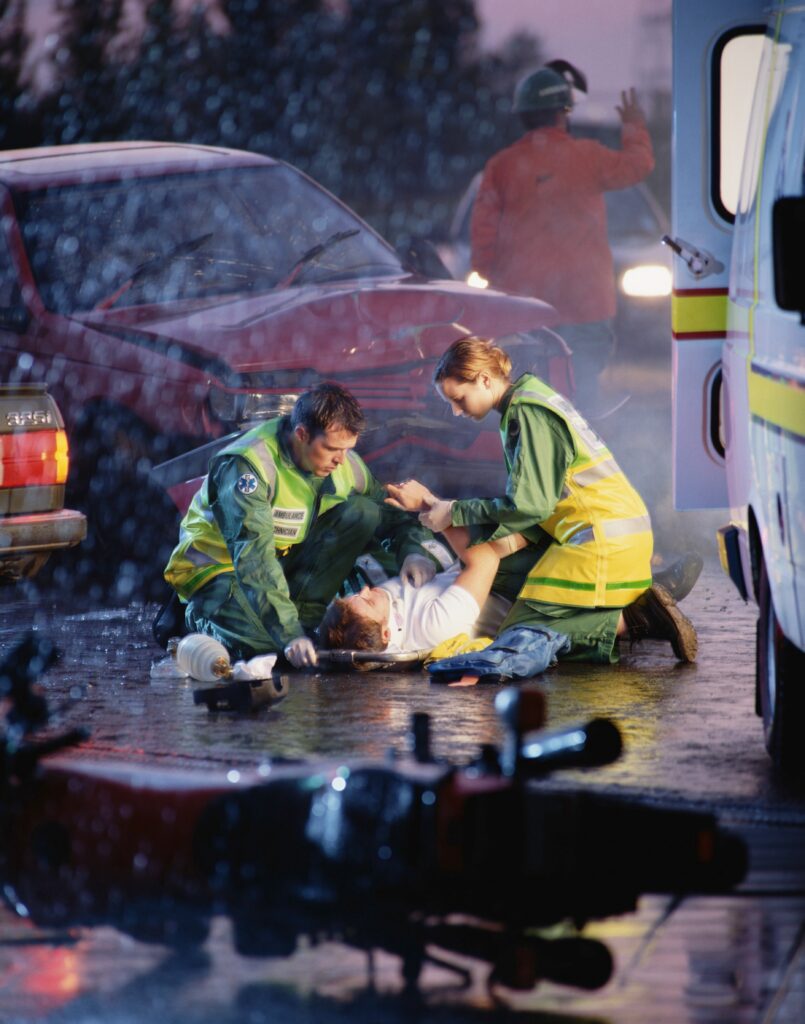April 1, 2025
Multi-Vehicle Collisions on Oregon Highways: Causes and Solutions

Oregon’s highways, including I-5 and I-84, are critical arteries for commuters and freight transportation. However, they’ve become increasingly prone to multi-vehicle collisions, a troubling trend that endangers lives and causes significant economic losses. These accidents, often referred to as “pile-ups,” involve three or more vehicles and frequently result in severe injuries, fatalities, and extensive property damage.
The Alarming Statistics of Oregon Collisions
Recent data from the Oregon Department of Transportation (ODOT) and the National Highway Traffic Safety Administration (NHTSA) highlights the severity of this issue:
- In 2022, Oregon recorded over 2,000 multi-vehicle collisions, a 15% increase compared to the previous year.
- These crashes accounted for 18% of all highway accidents but were responsible for nearly 40% of highway fatalities.
- I-5 and I-84 are the most affected routes, with over 60% of Oregon’s multi-vehicle collisions occurring on these highways.
Common Causes of Multi-Vehicle Collisions
Distracted Driving
Distracted driving remains a leading cause of multi-vehicle accidents. Whether it’s texting, eating, or adjusting in-car systems, drivers not paying attention contribute to the chain reaction typical of pile-ups. Studies show that distracted driving plays a role in over 25% of highway crashes in Oregon.
Adverse Weather Conditions
Oregon’s unpredictable weather, including frequent rain, fog, and occasional snow, creates hazardous driving conditions. Wet or icy roads reduce traction, while low visibility makes it harder for drivers to react in time. According to ODOT, weather-related factors contribute to nearly 30% of multi-vehicle collisions in the state.
Speeding and Aggressive Driving
High speeds reduce reaction times and increase the impact of collisions, making pile-ups more likely. Aggressive driving behaviors, such as tailgating and frequent lane changes, exacerbate the risks. Data from NHTSA reveals that speeding is a factor in 35% of multi-vehicle crashes nationwide, and Oregon’s highways are no exception.
Commercial Vehicle Involvement
Large trucks and commercial vehicles are often involved in multi-vehicle accidents due to their size and longer stopping distances. The Oregon Trucking Association reports that commercial vehicles are involved in approximately 20% of multi-vehicle crashes in the state.
The Human and Economic Toll
Multi-vehicle collisions result in devastating consequences for those involved:
- Injuries and Fatalities: Victims often suffer severe injuries, including spinal cord damage, traumatic brain injuries, and broken bones. Fatalities are tragically common in large pile-ups.
- Economic Impact: The financial burden of these accidents includes medical bills, vehicle repair costs, and lost productivity. ODOT estimates that multi-vehicle collisions cost Oregon’s economy over $500 million annually.
- Legal Challenges: Determining liability in a multi-vehicle collision can be complex, involving multiple parties and insurance claims. Consulting an experienced Oregon personal injury attorney is essential for navigating these challenges.
Preventative Measures Oregon Drivers Can Take
Improved Infrastructure
Oregon has invested in infrastructure improvements to mitigate the risk of multi-vehicle accidents. Initiatives include:
- Dynamic Message Signs: Providing real-time traffic updates to alert drivers about congestion and hazards.
- Ramp Metering: Controlling traffic flow onto highways to reduce congestion and sudden slowdowns.
- Weather-Responsive Signal Systems: Adjusting traffic signals based on weather conditions to enhance safety.
Public Awareness Campaigns
Educational campaigns like “Drive Healthy” aim to inform drivers about the dangers of distracted and aggressive driving. Encouraging safe driving behaviors is a crucial step in reducing highway accidents.
Enhanced Enforcement
Oregon State Police have increased patrols on high-risk highways, targeting speeding, distracted driving, and aggressive behaviors. These efforts have led to a 10% reduction in traffic violations on I-5 and I-84.
Advanced Vehicle Technologies
The adoption of advanced driver-assistance systems (ADAS) in modern vehicles can significantly reduce accidents. Features like automatic emergency braking and lane-keeping assist help drivers avoid collisions, even in challenging conditions.
Steps to Take After a Multi-Vehicle Collision
Being involved in a multi-vehicle collision can be overwhelming. Here’s what you should do:
- Ensure Safety: Move to a safe location, if possible, and check for injuries.
- Call Emergency Services: Report the accident to the police and request medical assistance if needed.
- Document the Scene: Take photos of the vehicles, road conditions, and any visible injuries.
- Exchange Information: Collect contact and insurance details from other drivers involved.
- Consult an Oregon Personal Injury Attorney: The aftermath of a multi-vehicle collision can be complex. An experienced attorney can help protect your rights and pursue fair compensation.
How an Oregon Personal Injury Attorney Can Help
At Dablow Law, we understand victims face challenges after a multi-vehicle collision. Our team specializes in personal injury cases, offering:
- Thorough investigations to determine liability.
- Skilled negotiation with insurance companies.
- Aggressive representation in court, if necessary.
Multi-vehicle collisions on Oregon highways are a growing concern, driven by factors like distracted driving, adverse weather, and speeding. Addressing this issue requires a combination of improved infrastructure, public awareness, and individual accountability. If you’ve been affected by a pile-up, working with an experienced Oregon personal injury attorney can make all the difference in securing the compensation and justice you deserve.
If you or a loved one has been injured in a multi-vehicle accident, don’t hesitate to reach out. Contact Dablow Law for a consultation and let us help you on the path to recovery.
